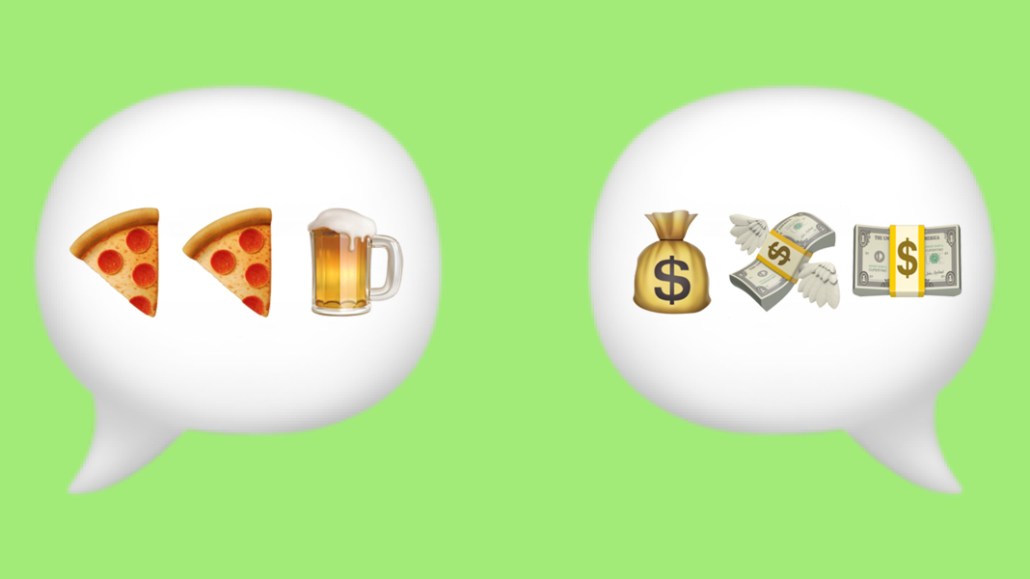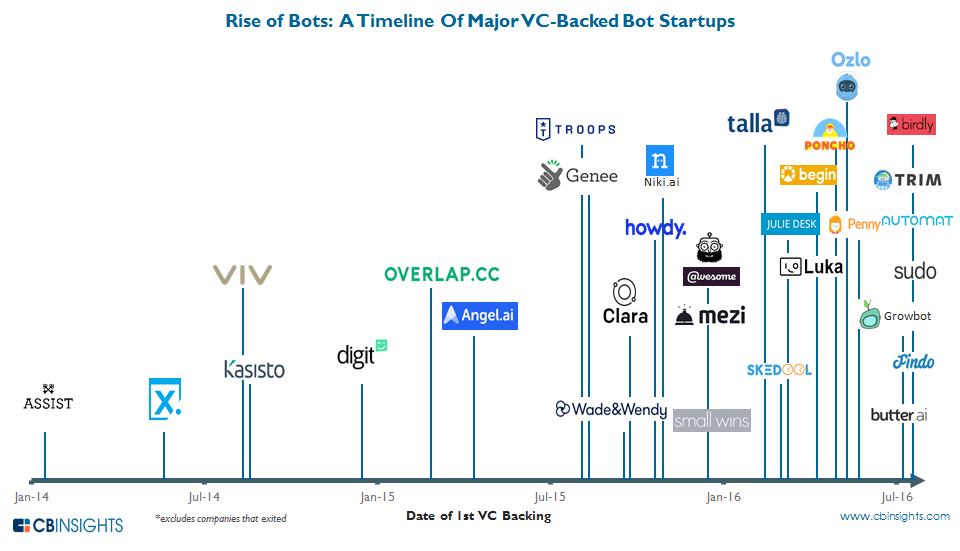Drop it like it’s bot: Brands have cooled on chatbots

What goes up must come down.
Just this week, Facebook said it was “refocusing” its use of AI after its bots hit a failure rate of 70 percent, meaning bots could only get to 30 percent of requests without some sort of human intervention.
Many brands had already begun dropping their bots, saying that they didn’t do what they were supposed to. Fashion retailer Everlane, which was one of the first Facebook Messenger partners, announced last week it would no longer use it, saying they would rather stick with email. For another conversational commerce pioneer, Spring, customers have found that the bot, based on Facebook Messenger, is hard to use and doesn’t have the level of personalization people expect.
“Bots that we are proposing for clients and customers are based on making sure we’re identifying a true need,” said Pam Scheideler, chief digital officer at Deutsch L.A. Scheideler and her team built a TacoBot for Taco Bell, which she cited as a good example of solving for a true need — group orders from the restaurant.
“We’ve begun to filter out and ask when is the right time to propose a bot, although clients are still pretty interesting.”
It’s not surprising that bots are experiencing a backlash. Like branded emoji keyboards before them, there was a gold rush toward the new tech. Taco Bell’s TacoBot let you order from your Slack messenger, Domino’s DOM helped users order from Facebook. At whole Foods, you could chat with the Messenger bot to get a recipe, while HP’s print bot printed things for you, via Facebook Messenger. Brands went to them because they were easy to build from a basic perspective. But while Facebook Messenger seems to be stalling, brands and agencies are starting to get cautious about bots and other doodads on other platforms too.
One sticking point is that bots are opt-in experiences. And for customers to opt into something that requires a new behavior plus a lot of information about them, they want the payoff to be pretty great. Users expect personalized, human-like assistance from bots — and that’s where they fail, at least for now.
And for sensitive situations that need a human input, bots don’t work.
“I would call it overpromising,” said CP+B executive creative tech director Joe Corr. “Brands that created bots with a structured request or utility like Domino’s or in retail were easy. But bots that tried to break out of the utility and be chatbots became the problem.”
Back in August, VC attention to the space seemed to have exploded. According to data provided by CBInsights, just in July, seven bot-focused startups raised first funding rounds. And CBInsights also made a running list of — as far as they knew — 51 corporate chatbots in travel, retail and insurance. People built them because it sounded cool to add “bot” to everything, said Scheideler. “Made us feel futuristic.”

The media side of the industry also invested heavily in chatbots, with publishers like CNN and Mic creating bots for breaking news, or in the case of Mic’s, to make conversation with readers. And as Digiday previously reported, while in the media business bots may be the future, they’re not the present, with publishers finding the results of integrating content onto Messenger or Kik kind of underwhelming.
Another problem is clients often think bots are the only way to get into machine learning or AI, both “hot” new technologies, according to Scheideler. For example a brand could use AI for a better product search on a website — no bot necessary. “There is a lot of confusion across the board,” said Scheideler. Martin Legowiecki, creative technology director at Deutsch agreed, saying that building a bot is complicated. For example, look at the myriad of ways a Slackbot decides whether to send a message: This Westworld-style flow chart reflects the kind of multi-level decision-making that goes into play when making a bot.

Then there is the question of whether the bot is about marketing or core business, said Corr, who argued that things like Domino’s or Taco Bell were about business and utility, not marketing.
And especially in Facebook, whose bot offering seems to have stalled with a failure rate, the platform changes to consistently and constantly that agencies and brands are worried about where to go next. And while Facebook may tolerate an uneven experience, brands and agencies won’t.
So for 1-800-Flowers, which offers a bot that lets you order flowers, it works great — but it doesn’t show all the options a website might. Bot tech is not especially advanced yet on natural language processing: Corr said things have improved, but there’s still a way to go. If bots are impressively conversational to start with, humans get too colloquial — and then the bot fails, creating frustration. “You have to think about is as creating a human. If you sort of just go out there, it won’t work.” said Legowiecki. “It’s hard to build an expertise.”
More in Marketing

WTF is the American Privacy Rights Act
Who knows if or when it’ll actually happen, but the proposed American Privacy Rights Act (APRA) is as close as the U.S. has ever come to a federal law that manages to straddle the line between politics and policy.

Here’s how some esports orgs are positioning themselves to withstand esports winter
Here’s a look into how four leading esports orgs are positioning themselves for long-term stability and sustainability, independent of the whims of brand marketers.

Marketing Briefing: Marketers eye women’s sports as a growth area amid WNBA draft, record March Madness
Marketers are considering the space more this year, according to agency execs, with some noting that the women’s athletes may get more attention from brands ahead of the Summer Olympics this July.








